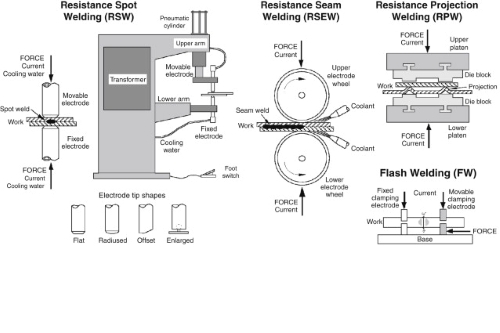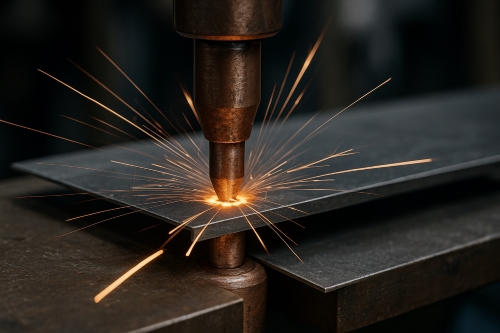Top 8 Highest Thermal Stability Ceramics
Introduction
Extreme heat-resistant ceramics find wide application in the majority of technical uses. They are utilised in furnaces, aerospace components, and heavy industrial machinery. They offer strength, chemical stability, and durability even under extremely high temperatures. The following are the top eight excellent thermal resistance ceramics.
Hafnium Carbide – Working Temperature: 3900 °C
Hafnium Carbide is a preferred choice for the most heat-resistant ceramic. It is able to withstand temperatures of up to 3900 degrees Celsius. It is employed both within engines and high-end aerospace components. It is desirable when temperatures exceed normal limits. Its enhanced thermal stability is helpful in scientific equipment requiring steady, accurate operation.
The hard nature of Hafnium Carbide makes it used in small amounts in composites. It increases the overall temperature resistance of certain alloy systems as well. The material does not undergo deformation and maintains its structure at extreme temperature levels.
Tantalum Carbide – Working Temperature: 3800 °C
Tantalum Carbide is one of the temperature-resistant ceramics. It can endure temperatures of approximately 3800 degrees Celsius. The ceramic finds its use in high-temperature furnaces where excessive heat is a significant concern. It is also utilised in aerospace and engine components. Its resistance to wear makes it stable even in the harshest environments. Engineers choose this material because it can remain stable even if metal components melt.
Tantalum Carbide has found application in the real world where high temperatures are the norm. Its structure does not deteriorate with sudden heat shocks. It satisfies the demands of applications where a material must perform without deterioration.
Zirconium Carbide – Working Temperature: 3400 °C
Zirconium Carbide shares numerous heat-resistant characteristics with its hafnium counterpart. It is highly stable when heated. This ceramic is used in tools that are consistently subjected to heat, such as reactor and furnace parts. Zirconium Carbide is also applied in protective coatings that safeguard engines operating at high temperatures.
This compound has been employed in various industrial processes. Its capacity to withstand rapid heat changes has been beneficial. Zirconium Carbide helps prevent wear and tear on essential metal surfaces.
Hafnium Diboride – Working Temperature: 3250 °C
Hafnium Diboride is another high-temperature-resistant compound. While not as well-known to the general public as some of the other compounds, it is increasingly vital in thermal applications. It is used in high-tech heat shields and industrial parts where temperature surges occur. Its properties help to minimise thermal expansion issues that accompany heat.
Hafnium Diboride is used by engineering teams in high-tech aerospace designs. In the design, the ceramic ensures enhanced safety in demanding thermal applications. Its resilience makes it a preferred choice among specialists who work in harsh environments.
Tantalum Nitride – Operating Temperature: 3000 °C
Tantalum Nitride is resistant to harsh thermal conditions. The ceramic is sought for use in contexts where high temperature and extreme chemical interactions are concerns. It appears in industrial furnace equipment hardware and electrical component coatings. The material remains stable when temperatures exceed those normal for other ceramics.
Applications in the real world reveal Tantalum Nitride in high-end electronics. Cyclic heating performance has been well-documented. It is a suitable option in applications that demand high-quality thermal resistance.
Boron Nitride – Working Temperature: 2000 °C (inert atmosphere)
Boron Nitride is a versatile ceramic, exhibiting high thermal stability. It can operate at temperatures around 2000 degrees Celsius in an inert atmosphere. It is used in lubrication, high-temperature insulators, and electronic components. The chemical resistance of Boron Nitride makes it a desirable product. This ceramic is also very lightweight, offering advantages for aerospace and electronic applications.
Its smooth texture renders Boron Nitride suitable as a coating for various industrial processes. It serves to reduce friction under high-temperature stress. Its record of enduring high temperatures renders it a reliable material in the eyes of many engineers.
Boron Carbide – Operating Temperature: 2000 °C
Boron Carbide possesses ideal thermal stability with maximum operating temperatures suitable between 1800 and 2000 degrees Celsius. Boron Carbide is also renowned for its hardness and lightness. Boron Carbide is widely employed in wear-resistant applications. It is also found in protective armour and abrasive tools where high heat is produced during operation.
Engineers prefer Boron Carbide due to its resilience. It increases the lifespan of many high-stress mechanical parts. Its ability to endure both heat and chemical corrosion has made it a preferred choice across a broad range of industries.
Silicon Carbide – Operating Temperature: 2000 °C
Silicon Carbide performs effectively across most industrial applications. It has resistance to temperatures of 1900-2000 degrees Celsius. Silicon Carbide is found in motor parts, brake pads, and heat components. Its thermal stability and high strength contribute to improved performance. It also has excellent wear resistance, which is beneficial during prolonged service.
Silicon Carbide's application in automotive uses has been extensively documented. Its durability under harsh conditions is suitable for energy and transportation sectors alike. It is the material choice for designers to utilise whenever failure is not acceptable.
Frequently Asked Questions
F: For what functions are high-temperature ceramics employed?
Q: They are used in furnaces, aerospace components, and industrial machinery to withstand extreme heat.
F: Can the ceramics endure sudden changes in temperature?
Q: Yes, they maintain their structure under rapid changes in pressure and heat.
F: Are the ceramics used in widespread common applications?
Q: They are employed in specialised industries and high-tech applications but not in common household products.

 Bars
Bars
 Beads & Spheres
Beads & Spheres
 Bolts & Nuts
Bolts & Nuts
 Crucibles
Crucibles
 Discs
Discs
 Fibers & Fabrics
Fibers & Fabrics
 Films
Films
 Flake
Flake
 Foams
Foams
 Foil
Foil
 Granules
Granules
 Honeycombs
Honeycombs
 Ink
Ink
 Laminate
Laminate
 Lumps
Lumps
 Meshes
Meshes
 Metallised Film
Metallised Film
 Plate
Plate
 Powders
Powders
 Rod
Rod
 Sheets
Sheets
 Single Crystals
Single Crystals
 Sputtering Target
Sputtering Target
 Tubes
Tubes
 Washer
Washer
 Wires
Wires
 Converters & Calculators
Converters & Calculators
 Write for Us
Write for Us
 Chin Trento
Chin Trento



